NIL
How college athletes will be paid after House v. NCAA settlement
The House v. NCAA settlement was officially ratified on Friday, clearing the way for universities to directly pay athletes starting in 2025. The settlement is expected to formally take effect on July 1, 2025, after it was approved by Judge Claudia Wilken of the United States District Court for the Northern District of California. This […]


The House v. NCAA settlement was officially ratified on Friday, clearing the way for universities to directly pay athletes starting in 2025. The settlement is expected to formally take effect on July 1, 2025, after it was approved by Judge Claudia Wilken of the United States District Court for the Northern District of California.
This settlement marks one of the greatest shifts in the history of college athletics by paving the way for formalized pay-for-play for the first time ever. The NCAA cleared several rules banning the practice in the lead-up to the settlement, and the new reality is now here.
So how will players be paid, and what impact will this have on the structure of college football heading forward?
How will players be paid?
Starting in 2025, colleges will be able to opt into revenue sharing with athletes. Athletic departments will be allowed to use their own funds to pay players, with a cap expected to hover around $20 million annually per school. That figure is intended to cover all athlete compensation across varsity sports — not just those that generate revenue.
The number represents approximately 22% of average athletic department revenue across power conference athletic departments. The settlement estimates that the total cap will start at around $20.5 million per school in 2025-26 and could rise to nearly $33 million per school in the next decade. Between the revenue sharing, scholarships and other athletic benefits, the NCAA believes that compensation to athletes could push close to 50% of athletic revenue in many athletic departments.
There are few guidelines in place for how the money should be distributed across sports. The expectation is that more than 70% of the funds — around $15 million — will go to football at power-conference schools. However, individual schools have the discretion to allocate funds as they choose. For example, Kentucky or UConn could decide to spend 50% of their budget on men’s basketball. Non-football schools in conferences, like the Big East, could gain a major advantage when funding other programs.
It remains unclear how Title IX will factor into the model, though at least some funds will likely be directed toward women’s sports. While players will be compensated directly for participating in college athletics, potentially through contracts worth seven figures or more, they still won’t be classified as employees. Instead, their compensation is expected to resemble that of independent contractors.
Which schools will be eligible?
Any NCAA schools that opted into the House settlement will be allowed to participate in revenue sharing, regardless of level or funding. Schools in the Big 12, Big Ten and SEC have all confirmed that they will pay out the full $20+ million rev share each season. The AAC notably is requiring schools to rev-share $10 million with their athletes over the next three years. Sacramento State, an FCS school hoping to transition to FBS, also intends to share revenue. Any school at any level of the NCAA can technically opt into the agreement as long as they in exchange follow the terms of the settlement. Plenty of FBS schools, however, will forego the major new expense.
Who will administer the new sport?
In the wake of the settlement, the Power Four conferences will take over regulation and enforcement of player compensation issues. They plan to create a new organization called the College Sports Commission, and will hire a CEO soon after the settlement. Power conference schools will be pressured to sign onto the new organization or risk expulsion from their conferences.
The CSC will be in charge of enforcing the upcoming salary cap and working with Deloitte to create the NIL clearinghouse. Additionally, they will police and enforce punishments for circumventing the salary cap or improper athlete compensation.
The decision to move player compensation to the CSC was spurred by the plaintiffs in the House case. The NCAA will continue to focus its enforcement efforts on its traditional issues heading forward, including player eligibility, academics, competition and a variety of other topics.
Can players still sign school NIL contracts?
The new agreement will allow players to sign outside contracts. However, a new wrinkle requires NIL contracts to be sent through a clearinghouse run by Deloitte to ensure “fair market value” based on an actual endorsement. For example, a rotation offensive lineman could potentially make six figures in the NIL era. While they will still be allowed to do that with a revenue-sharing contract, future NIL contracts are expected to be far more stringent. Additionally, the NCAA has the right to prohibit NIL compensation from a group it classifies as “Associated Entities or Individuals,” which would seem to mean boosters.
Take a player like Cooper Flagg at Duke. His brand value would be considered high for Duke, which could allow the school to pay him for an endorsement without pulling from their revenue sharing money. Notably, Texas coach Steve Sarkisian claimed Quinn Ewers did not take any money from their collective, instead signing endorsement contracts to claim his millions.
Per reports, Deloitte told ACC officials that 90% of existing NIL contracts with public companies would have been approved. More than 70% of deals with booster collectives would have been denied.
The rule is intended to prevent schools from using fake NIL deals to circumvent the salary cap. However, the likelihood of this is highly dependent on whether the Deloitte-run clearinghouse will have any teeth. At least one high-profile sports lawyer has argued for athletes to refuse to disclose NIL deals to the clearinghouse. It remains to be seen how the NCAA will attempt to handle a punitive case of cap circumvention.
The race to keep up with $40 million rosters is shaking college football
John Talty
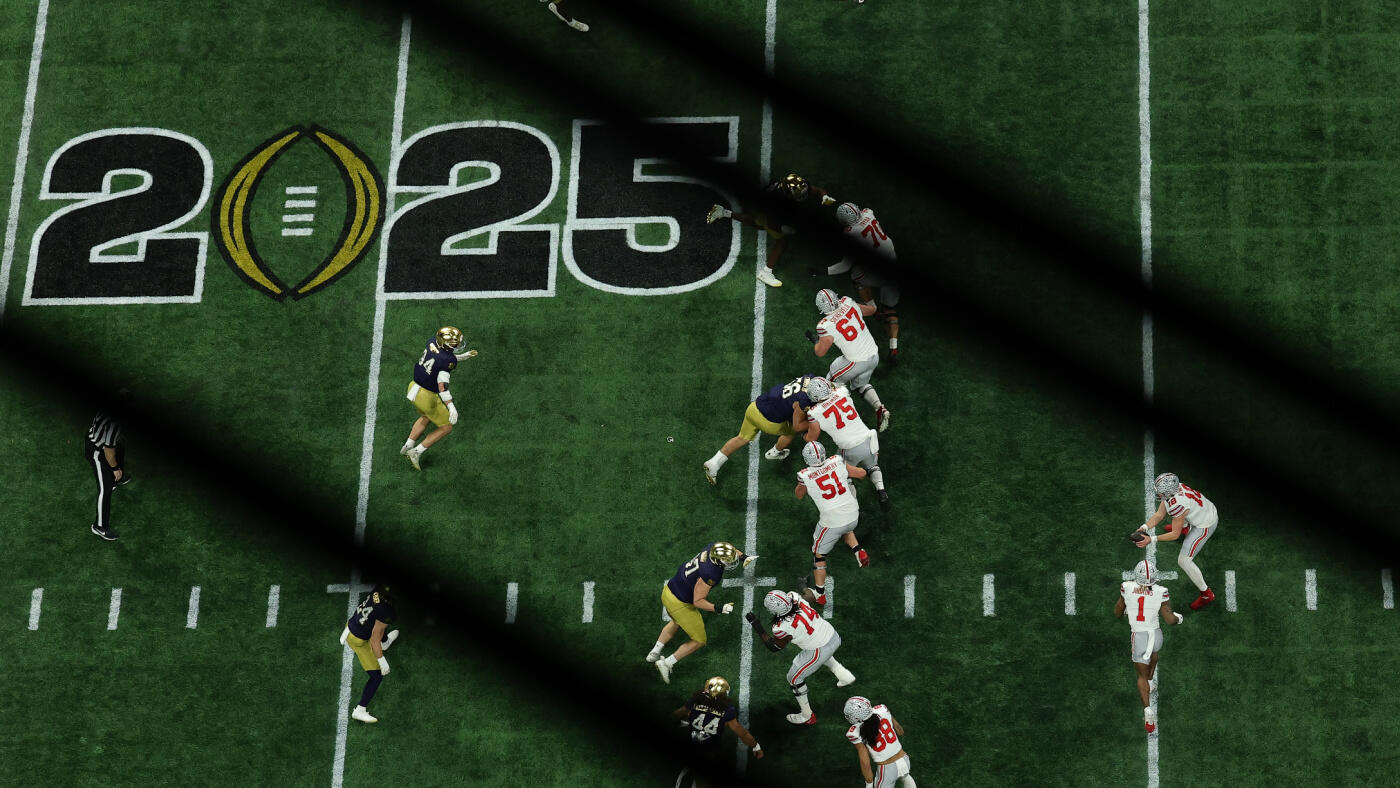
What will happen to collectives?
There’s no one consensus answer on the future of collectives; every school will handle them differently. Some will sunset their collectives and move all operations in-house. Others will use third-party collectives as a support tool for services like connecting athletes with outside endorsements or financial education. Different collectives have different relationships with their respective schools.
Will rev-share contracts be binding?
The short answer is — no one knows. Arkansas became the first school to publicly hire an attorney to enforce conditions on an NIL contract when quarterback Madden Iamaleava opted to transfer to UCLA. According to CBS Sports’ Brandon Marcello, Iamaleava’s deal requires a buyout of 50% of the remainder of his contract should he transfer.
Earlier this offseason, Wisconsin lost defensive back Xavier Lucas to Miami and similarly claimed that he was flaunting a two-year binding revenue sharing contract with the school. At this point, no formal legal challenge has been filed. Lucas is now on the roster at Miami.
The binding nature of contracts could be a key complication still remaining for the pay-for-play era. It could soon be addressed by the courts.
Is this the end?
Even though the House v. NCAA settlement is coming down, it doesn’t solve the biggest remaining questions around contracts, athlete movement, eligibility, NCAA enforcement power or a plethora of other issues. Key athletics leadership has consistently gone to Washington, D.C., to lobby for federal legislation.
Additionally, former Alabama coach Nick Saban and Auburn coach Tommy Tuberville (now a senator) have spoken to president Donald Trump about an executive order to help clarify rules. Trump has proposed a presidential commission to discuss college football issues, though it has not come to fruition. However, the House settlement will at least bring a backdrop for any solutions to be written on.
NIL
Sooner News Daily | Wednesday (July 2, 2025) – The Football Brainiacs
College Football Certified game wreckers 


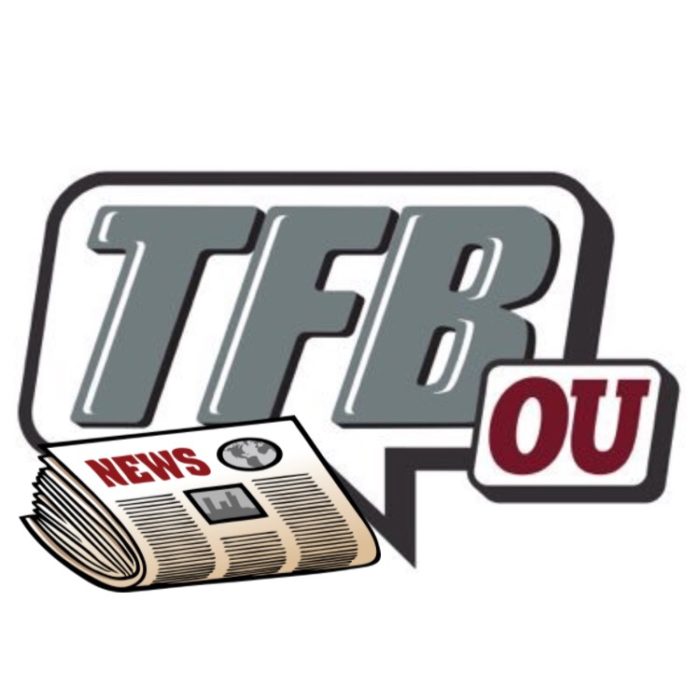
College Football
Certified game wreckers
@EASPORTSCollege
91 » @John_Mateer4
90 » @THEJAYDNOTT pic.twitter.com/u3EUDDSVO6
— Oklahoma Football (@OU_Football) July 1, 2025
Mel Kiper Jr. was the first-ever guest on The Dari Nowkhah Show.
Kiper spoke on what OU has in Jim Nagy as the General Manager.
“I don’t think there’s a better evaluator of talent out there.” pic.twitter.com/6KBwZNmWFs
— The REF (@KREFsports) July 1, 2025
NEW: EA College Football 26 Top 20 QBs
Do you agree?
https://t.co/4kJOkqWN5i pic.twitter.com/kUcSjTkEUL
— On3 (@On3sports) July 1, 2025
If you’re confused about all of this, here’s a story detailing the House revenue-share concept from last month when the settlement was approved – https://t.co/kQ1LWX9GHr
— Ross Dellenger (@RossDellenger) July 1, 2025
With the new rev-share reality now upon us, here’s a detailed projection of how schools are expected to pay athletes, both in 2025-26 and the years to come.https://t.co/eQUQ95HE3c
— Zach Barnett (@zach_barnett) July 1, 2025
OU Sports & News
Welcome to the 405
Chloe Rodriquez has officially signed and will join the Sooners as a transfer from Lamar! We’re so excited to welcome you to OU
» Two-time Southland Conference Champion
» 2024 U.S. Olympic Team Trials Qualifier pic.twitter.com/Tzz7tW8sWP— Oklahoma T&F & XC (@OU_Track) July 1, 2025
Welcome to the 405
Ahmed Sayf Kadri has officially signed and will join the Sooners as a transfer from Eastern Kentucky
» 2023 NCAA XC Championships Qualifier
» 3-time NCAA Outdoor Championships Qualifier (800m, Steeplechase x 2)
» 2024 African Games Championships Finalist… pic.twitter.com/xNf7CeXiqb— Oklahoma T&F & XC (@OU_Track) July 1, 2025
NIL
EA Sports College Football 26 Player Rankings: Top 20 Quarterbacks
EA Sports College Football 26 rolled out some more player rankings and revealed its top 20 quarterbacks. Get ready to play as these guys with their respective schools. Or of course, try to get them to transfer to your favorite program in dynasty mode! The list is pretty close to the standard ranking of quarterbacks […]

EA Sports College Football 26 rolled out some more player rankings and revealed its top 20 quarterbacks. Get ready to play as these guys with their respective schools.
Or of course, try to get them to transfer to your favorite program in dynasty mode! The list is pretty close to the standard ranking of quarterbacks throughout college football this year.
Without further ado, let’s dive into EA’s QB rankings for the new edition of the game. They are in order to go along with their actual rating.
There’s been a lot of buzz lately about Klubnik being the top quarterback in college football. Heck, some early mock drafts have him as the top QB, if not the No. 1 overall pick next spring.
Last season, he had a career year. Klubnik had 3,639 yards, 36 touchdowns, six interceptions and a 63.4% completion percentage to go along with 463 rushing yards and seven rushing touchdowns.
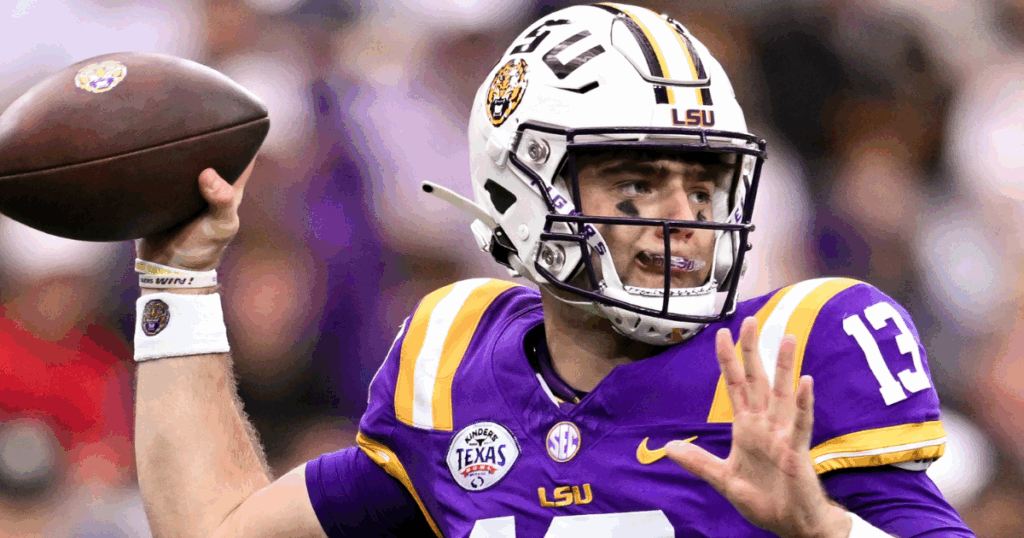
Nussmeier is a popular pick to win the Heisman Trophy this coming season, among other quarterbacks. But he’s proven he could fill the shoes of Jayden Daniels and could get LSU to the College Football Playoff this fall.
Last season, Nussmeier threw for 4,052 yards, 29 touchdowns, 12 interceptions and a 64.2% completion percentage. Expect those types of numbers once again this fall.
3. Drew Allar, Penn State – 92
Drew Allar has the build, the skill and the poise to be one of the best QBs in the country. It’ll be interesting to see how he follows up last year’s run to the CFP semifinals with national championship expectations in 2025.
Allar was a more accurate quarterback last year and tossed 24 touchdowns. He also threw for 3,327 yards but had eight interceptions compared to two in 2023.
4. Sam Leavitt, Arizona State – 91
Leavitt broke out last season, helping the Sun Devils win the Big 12 and make the College Football Playoff. The hype train around Arizona State is still chugging along.
Last season, he threw for 2,885 yards, 24 touchdowns, six interceptions and a 61.7% completion percentage. He added 443 rushing yards and five rushing touchdowns.
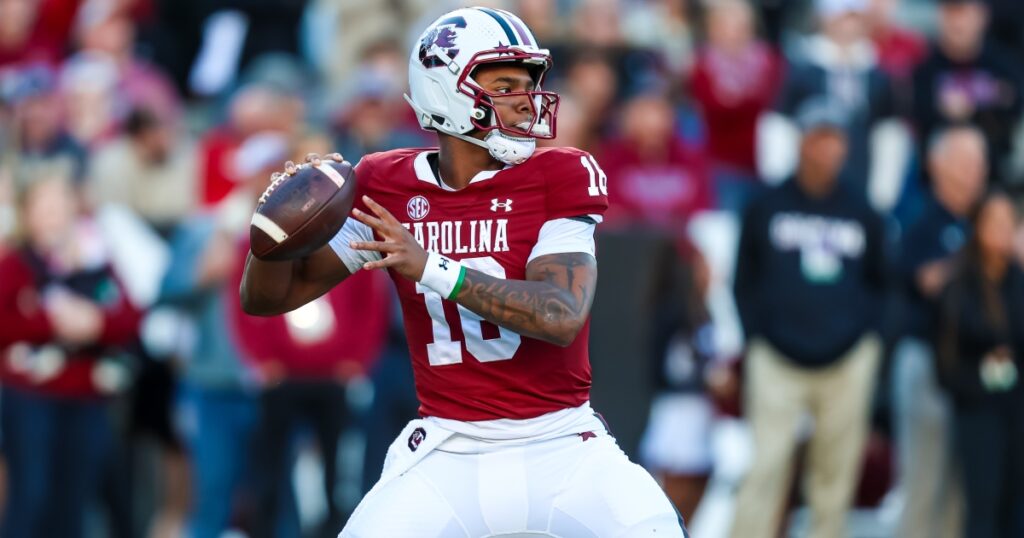
Sellers is a dual threat quarterback and would be fun to play in a video game wouldn’t he? Especially after his 2024 season and following some development, he’ll be a player to watch in the SEC this fall.
Last year, Sellers threw for 2,543 yards, 18 touchdowns, seven interceptions and a 65.6% completion percentage. He also ran for 674 yards and seven touchdowns.
Mateer is about to get way more hype now that he’s in the SEC. That’s just the way it works despite his really productive season as a quarterback at Washington State.
Last year, he threw for 3,139 yards, 29 touchdowns, seven interceptions and a 64.6% completion percentage. He also ran for 826 yards and 15 touchdowns. Good luck stopping him!
Beck gets a fresh start at Miami following his transfer this offseason. The former Georgia quarterback had a lot of ups with the Bulldogs, but also some downs and ended last year with a season-ending injury.
Last season, Beck was productive, but his completion percentage went down (64.7%) and interceptions went up (12). Still, he threw for 3,485 yards and 28 touchdowns in 13 games.
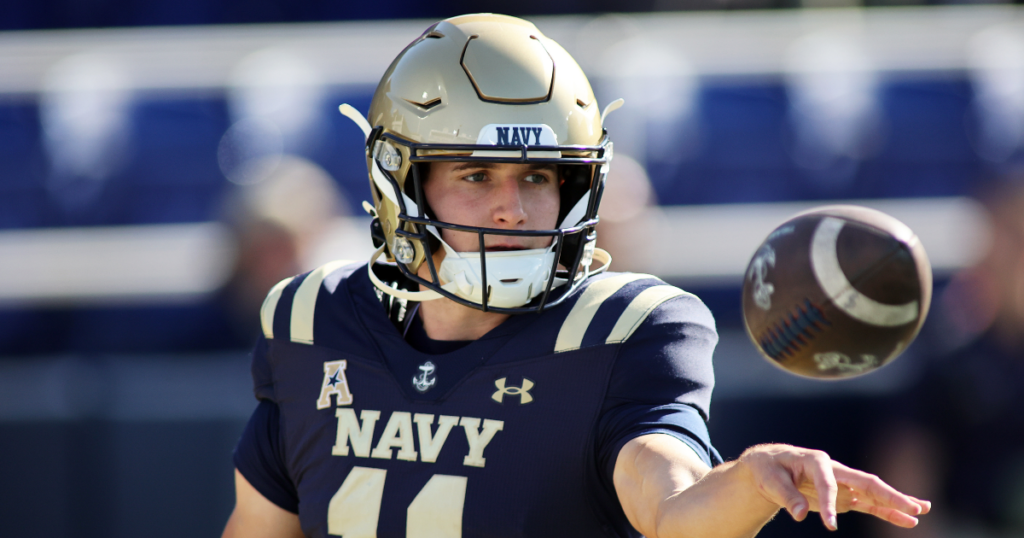
This man is a hammer! Horvath would run through a brick wall over passing it any day! In all seriousness, he’s a quality quarterback for Navy.
As a passer, Horvath only threw for 1,353 yards, 13 touchdowns, four interceptions and a 57.6% completion percentage. But as a runner, he’s a stud: 1,246 yards, 17 touchdowns and 7.1 yards per carry.
Manning was already getting a lot of hype going into his first full year as a starting quarterback. Now, the latest EA video game already has him as a top 10 player.
In limited opportunities, and two starts, Manning threw for 939 yards, nine touchdowns and two interceptions last year. He can also run really well, clocking in as one of the fastest QBs in the country, and he ran for 108 yards and four touchdowns on just 25 attempts.
10. DJ Lagway, Florida – 90
Lagway has a lot of potential as a quarterback and it seems like EA is banking on it as well. As long as he develops and stays healthy, he could really elevate Florida to new heights in 2025.
As a freshman, Lagway threw for 1,915 yards, 12 touchdowns, nine interceptions and a 59.9% completion percentage. If he cuts down on the turnovers and the offensive symmetry improves, it should be a good year.
11. Avery Johnson, Kansas State – 89
12. Kevin Jennings, SMU – 89
13. Darian Mensah, Duke – 89
14. Luke Altmyer, Illinois – 89
15. Kaidon Salter, Colorado – 88
16. Nico Iamaleava, UCLA – 88
17. Diego Pavia, Vanderbilt – 88
18. Rocco Becht, Iowa State – 88
19. Jake Retzlaff, BYU – 88
20. Sawyer Robertson, Baylor – 88
NIL
City of Detroit claps back at Sophie Cunningham after WNBA expansion dig
The city of Detroit fired back at Indiana Fever star Sophie Cunningham for her comments Tuesday about it being selected for WNBA expansion. Cunningham said in an interview prior to that evening’s WNBA Commissioner Cup final that she didn’t know “how excited (players) are to be going to Detroit or (Cleveland).” That led to the […]

The city of Detroit fired back at Indiana Fever star Sophie Cunningham for her comments Tuesday about it being selected for WNBA expansion. Cunningham said in an interview prior to that evening’s WNBA Commissioner Cup final that she didn’t know “how excited (players) are to be going to Detroit or (Cleveland).”
That led to the official X account for the city of Detroit drumming up a response. It cited the success of the previous WNBA franchise, the Detroit Shock, which won three championships in its existence from 1998-2009. It also called Detroit a “sports city,” noting the success of its other professional teams.
“The last time we were home to a WNBA team (Detroit Shock) we ranked top five in attendance for five straight seasons, No. 1 in attendance for three straight seasons and set a single-game attendance record of 22,076 fans at Game 3 of the 2003 WNBA Finals,” the post read. “Additionally more than 775,000 people were excited to come to Detroit for the 2024 NFL draft. Detroit is a sports town. We’re sure we’ll see the same excitement for the WNBA returning.”
The Detroit Shock were highly successful during their time as a franchise, and there was plenty of fan interest. They led the league in attendance for three straight seasons from 2006-08.
However, the team dropped to fifth in attendance and lost $2 million during its final season in 2009, according to the Detroit Free-Press. After owner Bill Davidson died, his wife, Karen, sold the team and the new owners relocated it to Tulsa. The franchise stayed in Tulsa through 2015 before relocating again, and is currently the Dallas Wings.
Detroit is also home to NFL, NBA, MLB and NHL teams. It has the fifth-most championships among the four major sports with 22 total.
Sophie Cunningham’s point was less about the city of Detroit supporting the team and more about whether players would want to live there. She argued that there were more desirable destinations, at least from her point of view.
“You want to listen to your players, too,” she said. “Where do they want to play? Where are they going to get excited to play and draw fans? I do think that Miami would have been a great one. Everyone loves Florida. Nashville is an amazing city. Kansas City, amazing opportunity. There’s a huge arena downtown that no one’s using. I think the women’s soccer league is showing that people draw.
“So I’m not so sure what the thought process is there. But at the end of the day, you also want to make sure that you’re not expanding our league too fast. …So I just think it’s kind of a hard decision-making situation. But man, I don’t know how excited people are to be going to Detroit or (Cleveland).”
NIL
SEC Program Selling Jersey Patches to Sponsors
In the modern era of NIL, every team is looking for an advantage and a way to make more money for their NIL program to give their program an upper hand in recruiting and NIL for players. Revenue sharing should slow that when you look at trying to find an upper hand to […]

In the modern era of NIL, every team is looking for an advantage and a way to make more money for their NIL program to give their program an upper hand in recruiting and NIL for players.
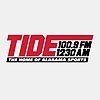
Revenue sharing should slow that when you look at trying to find an upper hand to pay current players, but the revenue sharing model does not say anything about recruiting. As a result, some programs are still shelling out significant money on the recruiting trail.
So, how do programs make money? Some teams increase ticket prices, while others, like Tennessee, are putting sponsors’ logos on the football field.
UTEP v Tennessee
Another SEC team is looking at going the same route as Tennessee, with On3 Sports reporting that the LSU Tigers are planning to sell jersey patch advertisements. The advertisements are pending NCAA approval, according to the report.
The Tigers are one of the premier schools in the SEC, and appear to be spearheading one of the biggest changes in the SEC this upcoming season. Some teams, namely in the NBA and the NFL, sell jersey patch advertisements during training camp and, for the NBA, the regular season.
While Alabama has not yet made a change like that to the traditional Alabama uniform, would you want to see Alabama make this change and sell jersey patch advertisements?
Wyatt Fulton is the Tide 100.9 DME and Brand Manager, primarily covering Alabama Crimson Tide football and men’s basketball. For more Crimson Tide coverage, follow Wyatt on X (Formerly known as Twitter) at @FultonW_.
Alabama Thrashes LSU 42-13 in Death Valley
Gallery Credit: Wyatt Fulton
Alabama Football 2025 A-Day
Gallery Credit: Wyatt Fulton
Alabama is Upset by Michigan in 2024 Reliaquest Bowl
Gallery Credit: Wyatt Fulton
NIL
NIL Go
“NIL Go,” the new clearinghouse born from the House settlement, is rapidly becoming one of the most discussed and debated developments among college coaches, student-athletes, and their representatives. On December 9, 2024, the NCAA issued guidance requiring any third‑party deal leveraging a student-athlete’s name, image, and likeness (“NIL”) valued at $600 or more be submitted […]
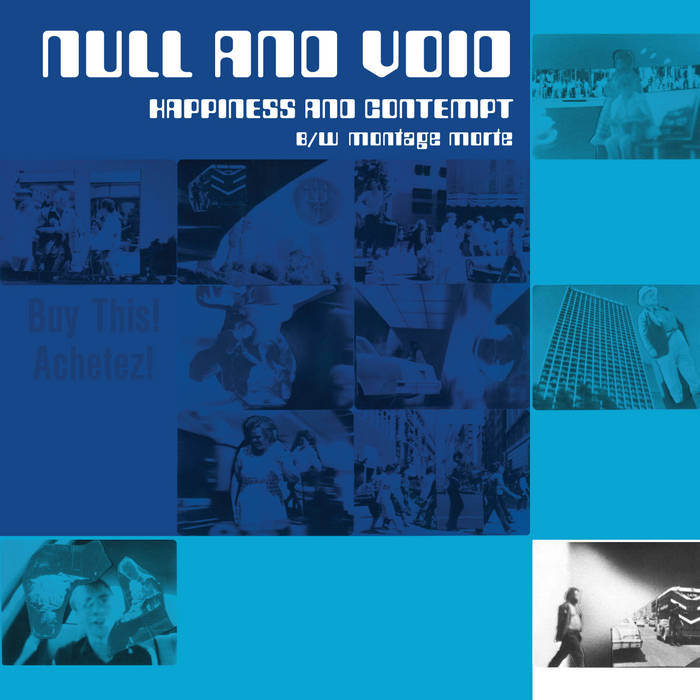


“NIL Go,” the new clearinghouse born from the House settlement, is rapidly becoming one of the most discussed and debated developments among college coaches, student-athletes, and their representatives. On December 9, 2024, the NCAA issued guidance requiring any third‑party deal leveraging a student-athlete’s name, image, and likeness (“NIL”) valued at $600 or more be submitted for a fair‑market‑value evaluation. Enter Deloitte’s solution: NIL Go. The new platform forces the threshold deals through a three-step process: (1) payor association verification; (2) business purpose validation; and (3) range of compensation analysis.
STEP 1 Payor association verification begins the process by determining if a payor is considered an “associated” entity or individual, which serves as the threshold question regarding the need for a fair‑market‑value assessment. This evaluation uses criteria including: whether the payor primarily exists to support a school’s athletics program; whether the payor offers exclusive NIL opportunities for the school; if the payor has contributed over $50,000 across its lifespan to the school; and whether the payor employs or is owned by individuals connected to the school or its associated entities.
STEP 2 To make sure a prospective NIL deal has valid business purpose, schools must assess whether the payor’s intention is to legitimately leverage the student‑athlete’s NIL for advancing real business objectives. This assessment at the payor level requires the school to confirm the payor’s identity and intent. Moreover, at the deal level, the schools examine the specifics of the NIL agreement and supporting documentation to identify any concerns. Payors must demonstrate a legitimate commercial rationale behind the deal, such as using the student-athlete’s NIL to promote a good or service offered to the public for profit. Separately, the payor must also ensure the deal is and remains compliant with current NIL regulations and applicable state laws.
STEP 3 The range of compensation analysis conducted by Deloitte applies a multipoint review of the proposed deal to determine if the offered compensation is consistent with deals involving similarly situated student-athletes. Importantly, Deloitte’s analysis only targets third‑party NIL agreements with “associated” payors and relies on historical data from both collegiate and professional athlete deals (excluding squad-based value and recruiting incentives) as benchmarks. Deal factors considered in the multipoint review include (i) the student-athlete’s performance obligations, athletic performance and social media reach; (ii) external benchmarks; and (iii) the local demand and market reach of the student-athlete’s school and athletic program.
Finally, following submission and review, NIL Go will place the deal in one of three categories: “cleared,” “not cleared,” or “flagged for additional review.” The affected student-athlete has the following three options if their executed deal is designated as not cleared: (1) revise the terms of the third-party agreement and resubmit it to the NIL Go platform; (2) terminate the deal in its entirety, which includes the student-athlete refunding whatever monies they already received under the agreement; or (3) appeal Deloitte’s decision through a neutral arbitration process. If a student-athlete fails to act on any of the options and, alternatively, elects to carry out the deal as prescribed, the consequences for both the student-athlete and, if they are aware of the designation, the school could be severe. Student-athletes can anticipate the loss of athletic eligibility being an early consequence of defying the NIL Go process. Importantly, Deloitte does not block deals; instead, it informs student-athletes of the eligibility implications and lets them decide whether to proceed.
NIL Go gives schools and student‑athletes a systematic, transparent method for verifying the perceived legitimacy and objective fairness of NIL deals with associated third-party payors. The platform aims to balance compliance and opportunity, while helping safeguard NCAA eligibility. As more schools onboard the new platform and Deloitte’s processes improve, NIL Go will quickly become central to all qualifying third-party NIL agreements.
Ensuring that student-athletes keep these steps top-of-mind throughout the deal process can be challenging.
[View source.]
NIL
Dez Bryant blasts Nike for losing Jeremiah Smith to Adidas
Superstar Ohio State receiver Jeremiah Smith shocked the sports apparel world Wednesday by inking a lucrative NIL contract with Adidas, the major rival of Nike, which is the Buckeyes’ official team sponsor. Minutes after Smith’s deal with Adidas was announced, former NFL receiver Dez Bryant took to social media to call out Nike for quite […]
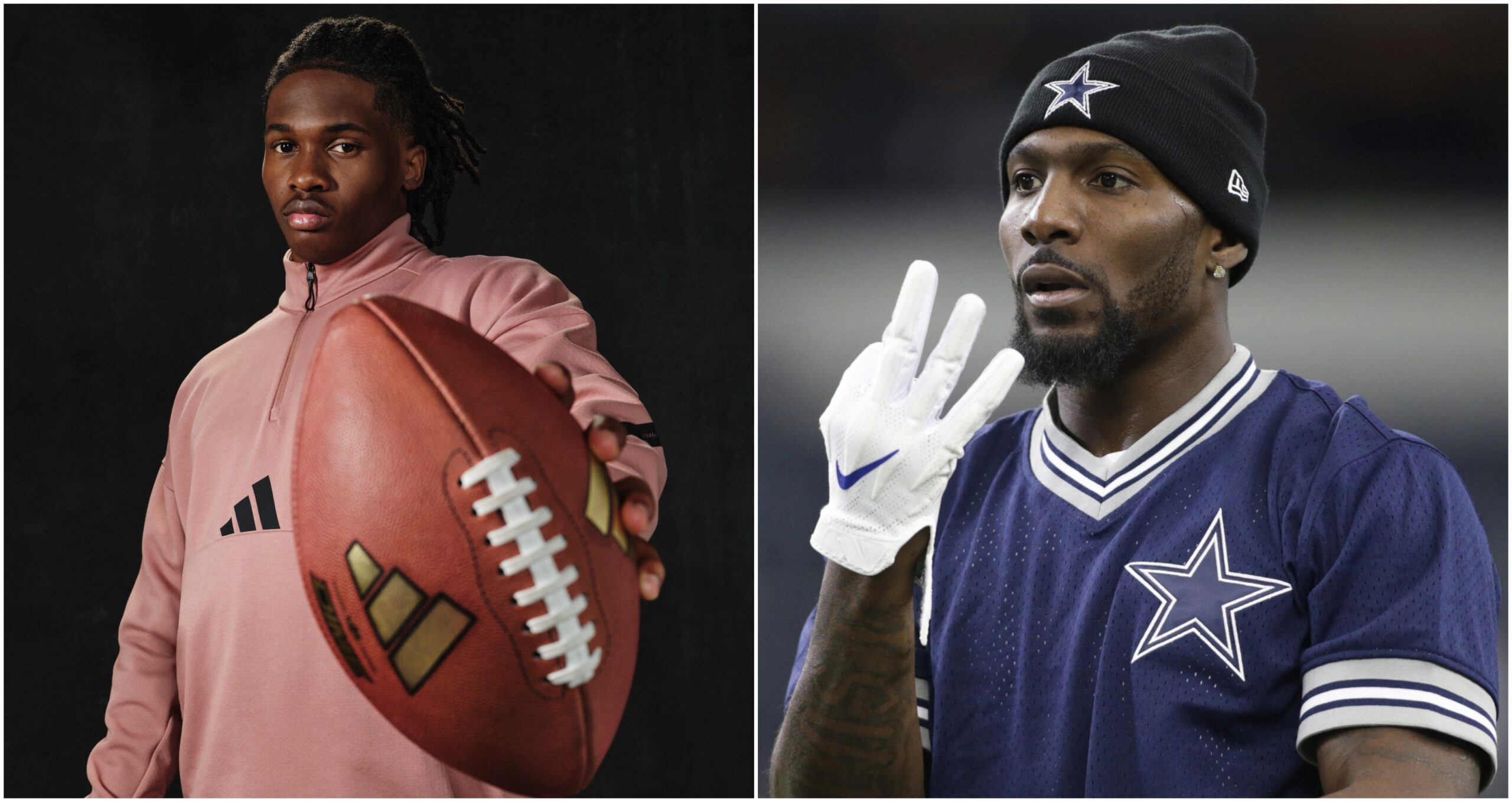
Superstar Ohio State receiver Jeremiah Smith shocked the sports apparel world Wednesday by inking a lucrative NIL contract with Adidas, the major rival of Nike, which is the Buckeyes’ official team sponsor. Minutes after Smith’s deal with Adidas was announced, former NFL receiver Dez Bryant took to social media to call out Nike for quite literally dropping the bag with Smith.
“Nike about to lose all credibility,” Bryant wrote Wednesday. “How did they lose Jeremiah Smith to adidas?”
Bryant also believes that by signing Smith — widely considered the best receiver in all of college football — Adidas is making a play for Nike’s spot as the top-ranked sports apparel brand.
“Adidas coming for the #1 spot,” Bryant tweeted.
Smith enters the 2025 college football season as the sport’s biggest brand name without the surname Manning after helping spark the Buckeyes to the 2024 College Football Playoff national championship with a Big Ten-best 1,315 yards and 15 touchdowns on 76 receptions as a true freshman.
But given Nike’s longstanding relationship with Ohio State, which is in the midst of a 15-year apparel agreement that began in 2018, Smith’s signing with Nike’s biggest brand rival is already sending shockwaves through the sports apparel world.
“One of the most memorable moments from last season was losing my black stripe and officially becoming a Buckeye,” Smith said in a statement released by Adidas. “Fast forward a year and I’m blessed to be adding three, joining the fastest brand in football. It’s crazy to be partnering with a brand that has such a talented roster of players and that I’ve been wearing since I was a young kid. We’re not done yet.”
Jeremiah Smith vows to never lose to Michigan for rest of Ohio State career
Jeremiah Smith had a borderline perfect first season at Ohio State. The wide receiver busted onto the scene, catching 76 passes for 1,315 yards and 15 touchdowns during the Buckeyes’ national championship run.
He dazzled in every way possible, but there was one major blemish on his team’s season as a whole. Ohio State once again fell to Michigan, suffering a highly-publicized and scrutinized 13-10 loss to the Wolverines on Nov. 30.
Smith caught a touchdown in that game, part of a five catch, 35-yard performance. That was far below the standard he’s set for himself though, and the one he’ll be trying to reach in his sophomore season.
After all the success he’s enjoyed thus far in Columbus, the loss to Michigan still sticks in his craw. Ahead of the 2025 season, Smith spoke with Manny Navarro of The Athletic, where he vowed to never lose to the Wolverines again, as long as the wide receiver is suiting up for the Buckeyes.
“I’m not a sore loser, but I hate losing, and losing to that team up north was pretty crazy,” Smith said, via The Athletic. “In the end, I think it really helped us play the way we did in the playoffs. But I didn’t want to go to Ohio State and lose to that team up north.
“I just hate them. Just something about them. For the next two years, I promise you, I will not lose to them. I can’t lose to them in the next two years.”
— On3’s Steve Samra contributed to this report.
-

 Motorsports3 weeks ago
Motorsports3 weeks agoNASCAR Weekend Preview: Autódromo Hermanos Rodríguez
-
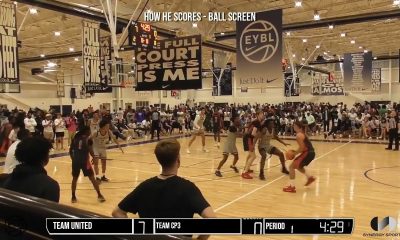
 College Sports3 weeks ago
College Sports3 weeks agoIU basketball recruiting
-

 Social Media3 weeks ago
Social Media3 weeks agoPune Athletes Make Global Mark at IRONMAN Hamburg and Brazil 2025
-
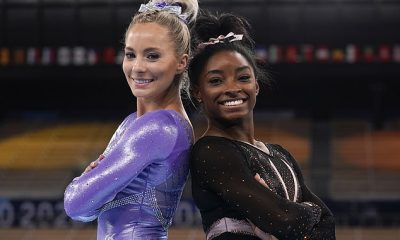
 Health3 weeks ago
Health3 weeks agoGymnast MyKayla Skinner Claims Simone Biles 'Belittled and Ostracized' Her amid Riley …
-

 Motorsports3 weeks ago
Motorsports3 weeks agoNASCAR Race Today: Mexico City start times, schedule and how to watch live on TV
-

 Motorsports3 weeks ago
Motorsports3 weeks agoNASCAR in Mexico City: Where to watch, start time, stream, lineup, race preview for inaugural Viva Mexico 250
-

 College Sports6 days ago
College Sports6 days agoWAC to Rebrand to UAC, Add Five New Members in 2026
-

 College Sports3 weeks ago
College Sports3 weeks agoLivvy Dunne honors boyfriend Paul Skenes with twist on LSU jersey
-

 Health3 weeks ago
Health3 weeks agoChicago Sky receive unfortunate reaction to 'mental health' statement with Angel Reese
-
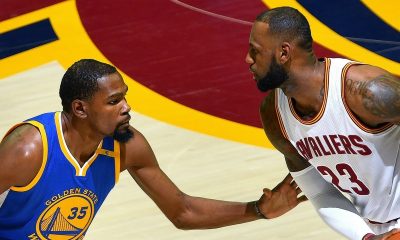
 Health2 weeks ago
Health2 weeks agoKyrie Irving's Strong Message Amid Men's Mental Health Awareness Month






































